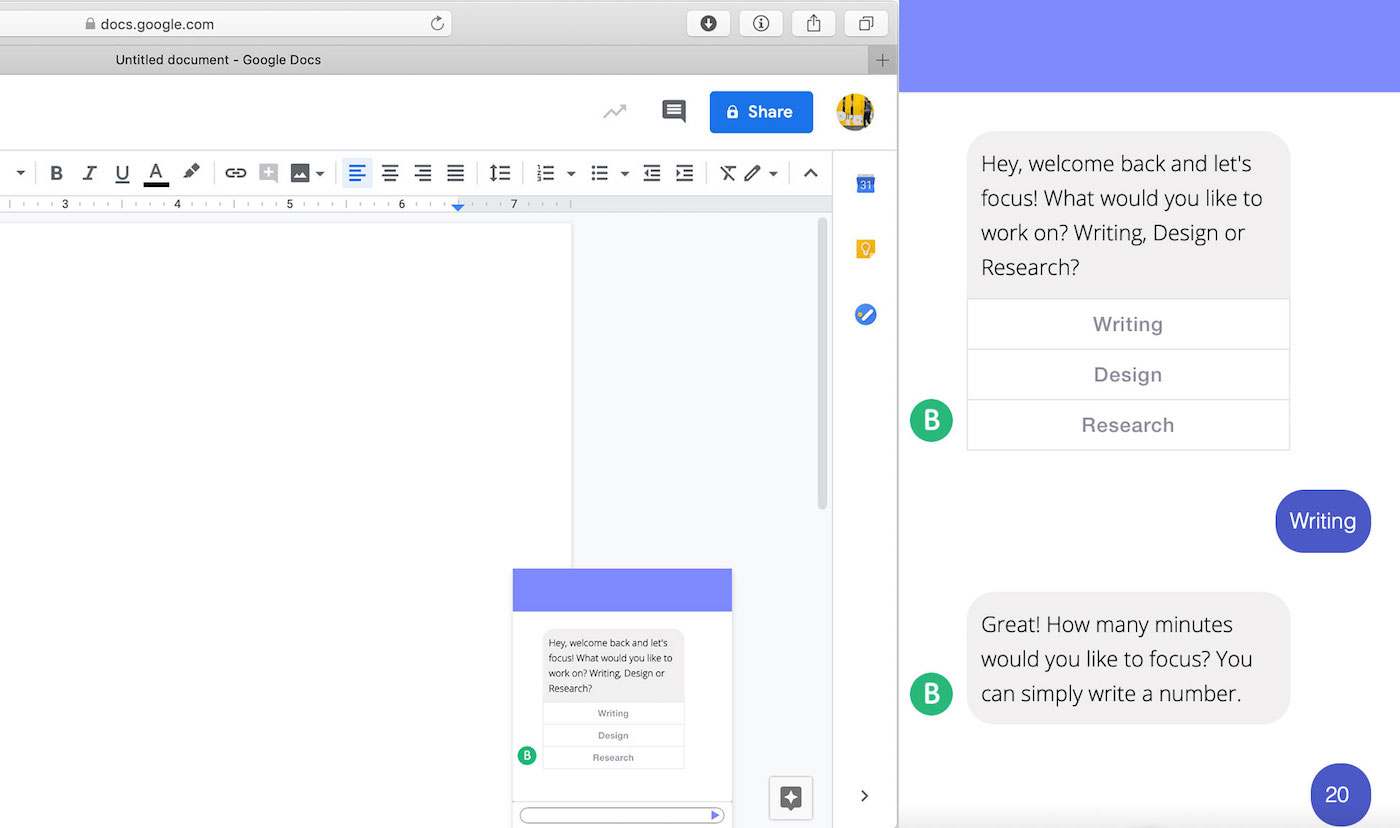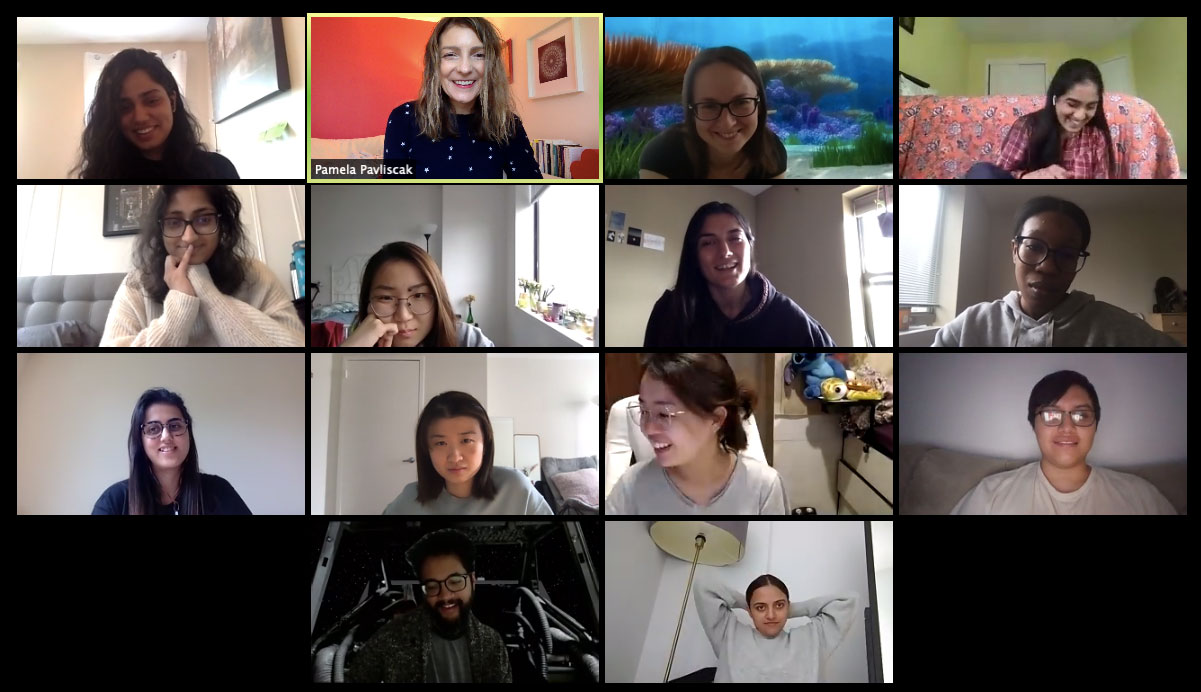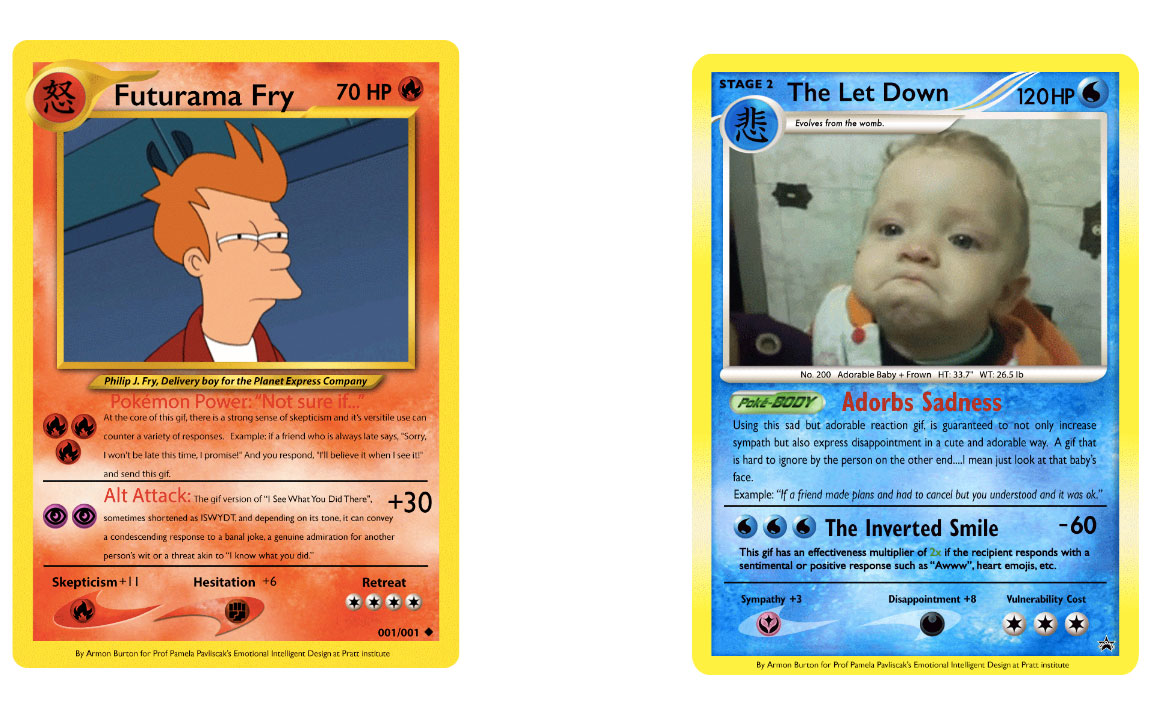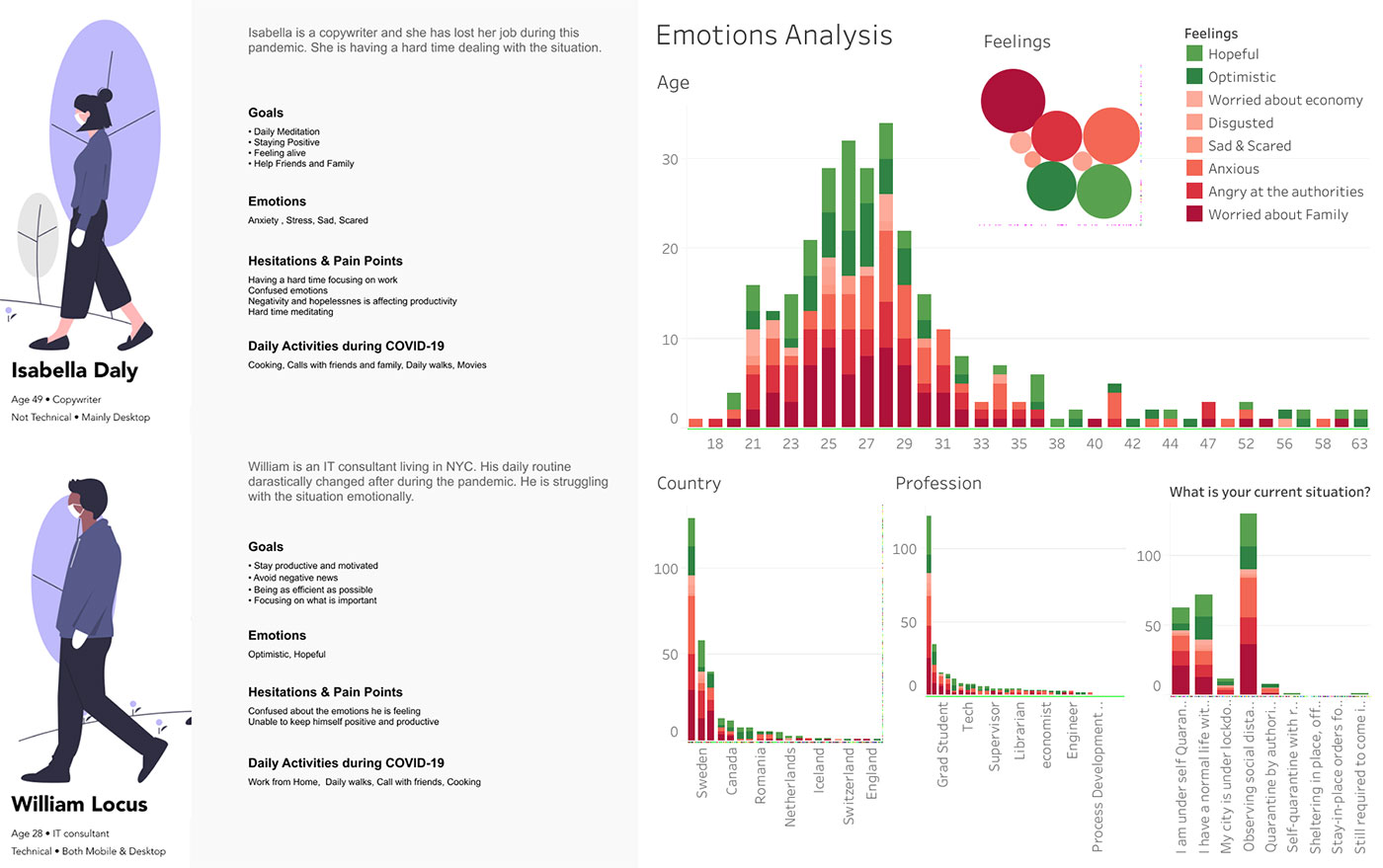
Designing a chatbot to help get past procrastination (courtesy Veronika Kostova, MSIXD ‘20)
It is easy to procrastinate when working alone. Even before the COVID-19 pandemic with its constant distractions and necessity for self-isolation, Veronika Kostova, MSIXD (Information Experience Design) ’20, was thinking about ways to mitigate the negativity around procrastination like guilt and stress. This led her to examine how, in a virtual space of research, study, or writing, a chatbot might offer companionship to make working alone more emotionally positive.
“Now, many people work from home and need to focus while they are alone,” she said. “Emotionally, that can be very taxing.” Utilizing sample scripts, interaction models, flow diagrams, and a prototype, the chatbot is being designed to accompany someone in solitary work, offering conversation and support. “I am interested in helping people get into a flow state that allows them to do their work while being in a positive emotional state that makes them want to get back to it,” she said.

Screenshot of the Emotional Design virtual classroom (courtesy Pamela Pavliscak)
Kostova is building her chatbot as part of the Emotional Design class led by Pamela Pavliscak, visiting assistant professor in the School of Information and author of Emotionally Intelligent Design: Rethinking How We Create Products (2018). “Emotions are the undercurrent to our experience with technology and now, more than ever, that hidden emotional life is coming to the surface,” Pavliscak said. “The big goal of the class is to design technology that recognizes and respects our inner life.” Empathy in that context and the way it can be impacted or enhanced through technology that recognizes the user experience has been a focus this semester. As Pavliscak observed, “Design mediates experience, it’s that layer between people and the world” and it can’t be thoughtfully created “without paying attention to something so fundamental as emotion.”
In hands-on exercises and projects, students have explored emotionally intelligent products—such as apps, chatbots, or other forms of computing that simulate or mediate human behavior—to consider how they can center the user to foster empathy. Even before offices, classrooms, and socialization spaces became largely virtual in the pandemic, our day-to-day digital interactions regularly provoked our emotions, whether Twitter aggregating the most bombastic Tweets to the top of our feeds or receiving a reaction GIF from a friend in response to a text. Armon Burton, MSIXD ’20, was interested in this interactive aspect of text-based communication where people use GIFs to express emotions instead of typing them out. “The GIFs or emojis that you use are always very personal,” he said.

Examples of the reaction GIF cards created by Armon Burton, MSIXD ‘20
Initially, he was working on a digital project, but that transformed into something analog after COVID-19 made so much of daily life a virtual experience. Using Pokémon-style cards, he’s making a space where people can explore and discuss the moods GIFs evoke. That dialogue can be incredibly important when they are so individual, as unlike emojis they are not standardized across devices. “One of the things I’ve been learning is that different cultures use different memes and GIFs,” Burton said. “Some that I use on a regular basis are more American. These cards can help people decipher and understand those meanings.”
As emotions can tend to run high online, students Aimen Awan, MSIXD ’20, Shradha Shree, MSIXD ’20, and Richa Kulkarni, MSIXD ’21, are examining how an app could encourage hope and offer calm. “Calmdemic is a mobile application that helps people stay positive during COVID-19 by tracking their emotions and suggesting healthy activities,” Awan said. “We felt that we are struggling to keep ourselves productive and calm under these circumstances.”

Research for the Calmdemic app (courtesy MSIXD students Aimen Awan, Shradha Shree, and Richa Kulkarni)
Calmdemic includes an emotion tracker where users can monitor the fluctuations in their feelings. In response to this data, the app recommends actions, such as meditative breathing or movement exercises, and offers reports on uplifting news happening around the world. The students’ research for the app has involved surveys and interviews with an international audience to tailor these features to individual needs and in turn, provide an empowering tool to bring positivity into daily routines.
Although the shift to distance learning has changed the way the Emotional Design students interact as they collaborate to address these issues, the situation has only underlined how significant the emotional connections created through technology are to their lives.
“The low buzz of anxiety makes us all the more aware of the exhaustion from being on camera, the lack of real-life serendipitous intimacy, and the exposure to intense emotion on social media,” Pavliscak said. “But there’s this other hopeful world that we can see on screen and off—a moment of relief at seeing pets and quirky collectibles on video chat or a feeling of solidarity as we clap for health care workers. Our goals for the class have become personally, and urgently, relevant.” Through their projects, the students are demonstrating how these feelings of togetherness, companionship, and empathy can be designed into a more positive technological future.